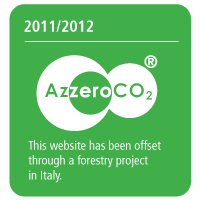 |
 |
 |
||
       |
||||
Participation to SDE
Our participation in the SDE 2012
During the Barcelona Construmat Fair we were asked to answer to the following questions. The answers show our philosophy of teamwork and design.
Why did you decide to apply for participating in the SDE 2012?
It's the first time that Italy “belong” to this competition. So far no Italian Team has ever participated in a Solar Decathlon, either in the USA or in Europe. Italy is on the cutting edge of advanced research and has extensive expertise in the field of innovation and patenting of sustainable building systems and materials. For example the research of Italian companies and universities for the production of organic PV (University of Rome Tor Vergata), research on photocatalytic materials to abate CO2 emissions in the environment (Italcementi), the production of corn-based bioplastics (Mater-B by Novamont) or bioplastics made from apple skins, tomatoes or tomato seeds (CNR, Naples) and recently from sugar (Bologna).
Among all Italian universities, the “Med in Italy” team is the most suited to participating in this competition; by proposing a housing model suited to the Mediterranean climate and building traditions, any experimental construction will be directly inspired by its regional characteristics and trigger positive professional developments for students, our future architects. It is worth noting that in Italy there is a tendency to import housing models from countries in the north of Europe. Although these countries conduct highly advanced research on self-sufficient housing, they base their models on a climate and building traditions very different to those in the Mediterranean. Italy, especially central and southern Italy, needs to fi nd opportunities to experiment its know-how and assert a housing model suited to its own climatic, economic and social environment.
How has your acceptance impacted on your school?
The first issue we had to face to within the schools was that very few people knew about the competition, so we spent a lot of efforts to spread out about the competition itself not only within the school but also outside of it, with a lot of communication activity. The project get featured in many national newspapers, magazines, radio and TV shows, and this made people more aware of the importance of our initiative.
After 5 months of dissemination, done in parallel to the design activity, sometimes subtracting some precious time to it, now we start to see the first results.
A very important aspect is that we made two different Universities team up for this project. Roma Tre and La Sapienza. This is very unusual and also the fact that the youngest university, Roma Tre, leads the team. This opens a new scenario where the two schools give up on competition and build possibly a much more integrated university system in Rome.
From the point of view of the integration of the Solar Decathlon issues in the students’ curricula, the members of the team started since the beginning to move their teaching and research activity to the Solar Decathlon project. We have now courses that use the rules as design topic for the students, as well as students developing their final theses on the different aspects and disciplines involved into the design, such as building automation, lighting, software engineering, structural engineering and bioclimatic strategies.







